This section allows you to view all posts made by this member. Note that you can only see posts made in areas you currently have access to.
Messages - ssshashini
16
« on: August 31, 2018, 11:44:52 AM »
Philips is planning to introduce support for Apple's Shortcuts feature in its Hue app in iOS 12, Philips announced today at the IFA electronics trade show in Berlin (via iCulture). With the integration, Hue owners will be able to add lighting recipes to various Siri Shortcuts, such as shifting the lights in the dining room to a certain color with a Siri voice command like "Dinner Time," as demoed by Philips.  Siri Shortcuts is a Siri feature designed to allow users to create multi-step shortcuts using first and third-party apps that can be activated by Siri voice command. Shortcuts are deeply customizable, and third party apps like the Hue app are able to develop quick actions for Siri that can be incorporated into Shortcuts recipes. When Hue integration launches, Hue options will be available in the dedicated Shortcuts app. The Hue shortcuts will be compatible with other shortcuts, so you can have a whole "Dinner Time" setup that not only changes the lights, but also does things like turn on music and text family members that the food is ready. Siri is able to suggest frequently used Shortcuts right on the iPhone's lock screen and Apple Watch, so if there are Hue-related lighting shortcuts that are often used, these options will be able to be implemented with a simple tap. Right now, the Shortcuts app, which is what's used to create these Siri Shortcuts, is available to developers in a beta capacity, but it will be released when iOS 12 is released. Sometime after that, Philips will presumably implement Shortcuts support. Philips today also announced a new power feature that's designed to allow Hue lights to retain their color and brightness settings after a power outage or after a lamp has been manually turned off, and the company is partnering with new lighting companies that include Makris, Kichler, Busch-Jaegar, Illumra, Koizumi, and John Lewis for its Friends of Hue program. Discuss this article in our forums   
17
« on: August 31, 2018, 11:44:52 AM »
Customers who use Apple's CarPlay feature report a higher satisfaction rate than those who are using Android Auto, according to data gathered by a new J.D. Power survey. On a 1,000 point scale, Apple's CarPlay earned a satisfaction score of 777, compared to Android Auto's score of 748. 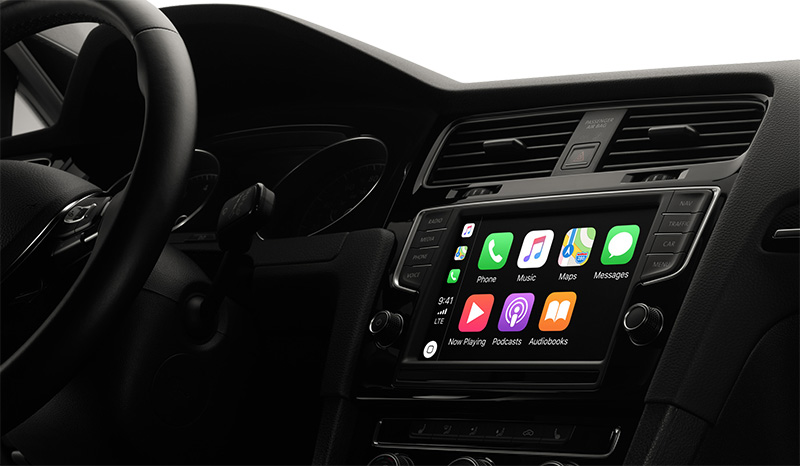 Though drivers appear to be more satisfied with CarPlay, Google still has an edge over Apple on navigation. Among owners who use their own navigation system, 56 percent choose Google Maps most often, while 16 percent use Waze most often. Just 23 of respondents percent said that they prefer to use Apple Maps, and even iPhone owners were more likely to use Google Maps. These numbers could shift further in Google's favor with the release of iOS 12, which will give CarPlay users the ability to use third-party mapping apps in lieu of Apple Maps. Overall, according to J.D. Power, most consumers consider phone systems like CarPlay and Android Audio better than native systems installed in cars. "Most consumers consider phone systems better for navigation and voice recognition--and they're free. 'Better and free' are hard to compete with, so automakers will inevitably have to cede this territory and will be much better served by focusing on areas where they are the exclusive provider--like driver assistance and collision avoidance--and continue to hone those systems."In fact, 19 percent of new vehicle owners who have factory-installed navigation options don't use it, and of those people, 70 percent use another device, which is "almost always" a smartphone. While CarPlay was slow to roll out following its 2015 launch, it is now installed in hundreds of vehicles from nearly all prominent automobile manufacturers. Apple maintains a list of vehicles that include CarPlay support on its website. CarPlay is also available as an aftermarket option in systems available from companies like Pioneer, Sony, Alpine, and Kenwood. J.D. Power's data was gathered from a survey of nearly 20,000 vehicle owners and lessees, and the full report contains additional detail about the highest-ranking vehicles from 2018. Related Roundup: CarPlayDiscuss this article in our forums   
18
« on: August 31, 2018, 11:44:52 AM »
iPhone and iPad users who have installed the current iOS 12 beta are being plagued with a continual popup that suggests a new iOS update is available when it's not. Affected users are seeing the following message: "A new iOS update is now available. Please update from the iOS 12 beta." The problem is users receiving this message are running the most recent version of iOS and there is no additional software to update to. 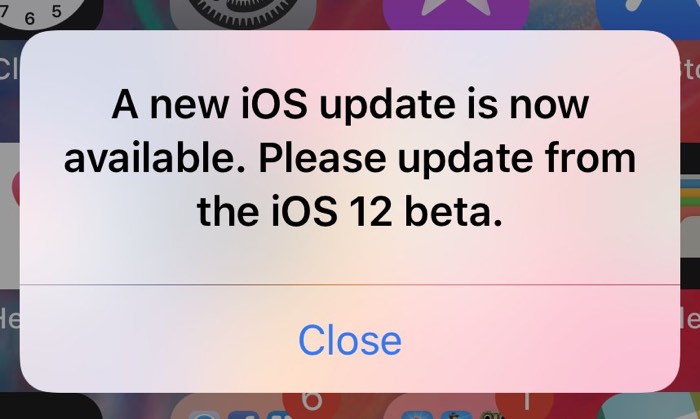 Beta testers have been seeing this popup since the latest beta was released on August 27, but over the course of the last day, the popups have become much more frequent. Many users are now seeing the popup every time an iPhone or iPad running the beta is unlocked, and it is a popup that must be manually dismissed each and every time before an iOS device can be accessed. Developer Guilherme Rambo has suggested that an error in the latest update causes the iOS beta to think that its expiration date is imminent, leading to the popup problem. It looks like this method in Springboard does some date/time calculations to determine if the current build is about to expire, every time the cover sheet gets dismissed. For some reason, the latest builds of iOS 12 think they're about to expire. ( @davedelong  ) pic.twitter.com/HWe7C0NnIT— Guilherme Rambo (@_inside) August 31, 2018 Complaints on Twitter and the MacRumors forums are picking up from users who are frustrated with having to continually dismiss the popup, and it's not clear when a fix will be available. Related Roundup: iOS 12Discuss this article in our forums   
19
« on: August 30, 2018, 07:24:20 PM »
Avido's new WiBa Wireless and Stackable Power Bank and Charging Pad combines wireless charging with a wireless power bank, allowing for a completely wire-free iPhone charging experience both at home and on the go. The WiBa kit comes with three pieces: a wireless charging pad, a 5,000 mAh battery pack, and a cable plus power adapter to power the wireless charging portion of the device. The battery pack is designed to charge on the charging pad with the iPhone able to charge on top of the battery pack, so you can charge both the iPhone and the battery pack all at once. 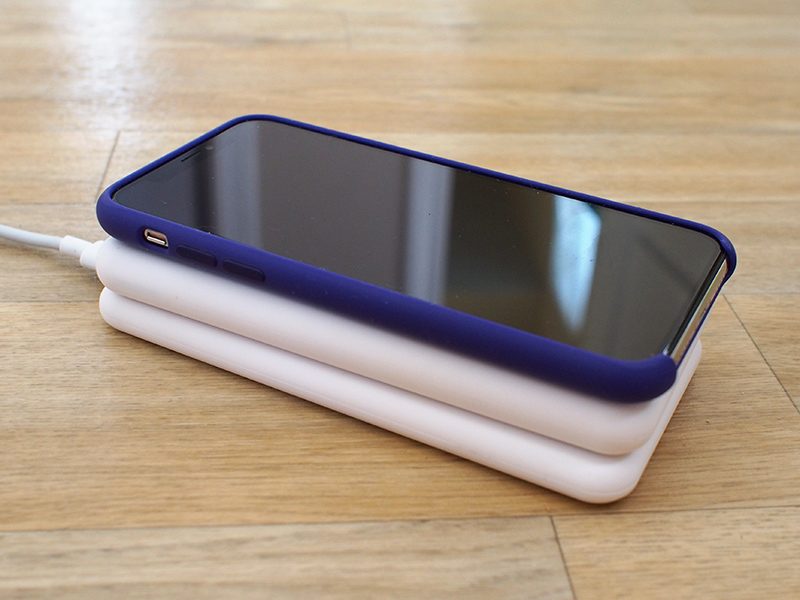 Made from a white plastic with a soft rubber coating, the WiBa wireless charging pad is about the size of the iPhone X when it comes to length and width, but it's much thicker. The accompanying power bank is crafted from the same material and is the same size and length as the wireless charging ?pad. The power bank is even thicker than the pad, which means it's several times thicker than an iPhone X. Theoretically, you could pocket the power bank just like an iPhone X, but given its thickness, I'm not sure that you'd want to. 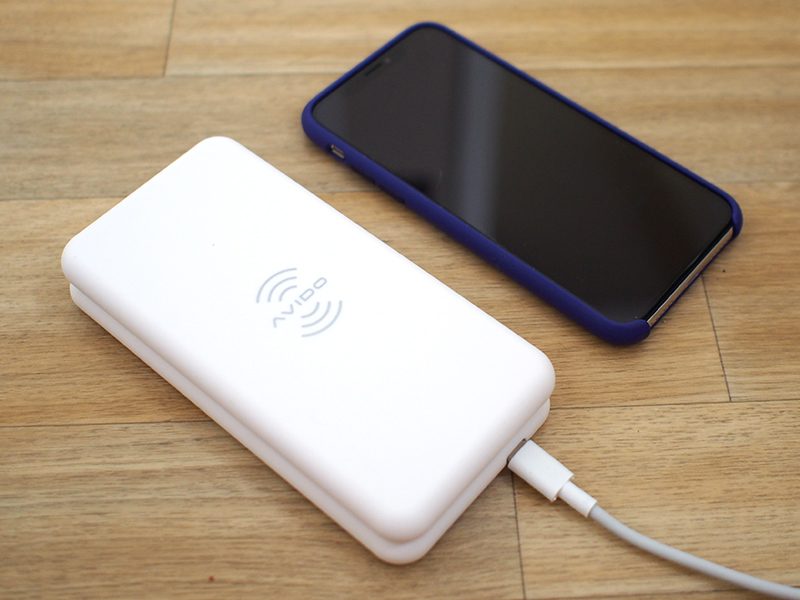 The power bank fits better in a bag or a backpack, but it's still going to take up more room than competing power banks that have the same battery capacity, which is one of the negatives to this accessory. 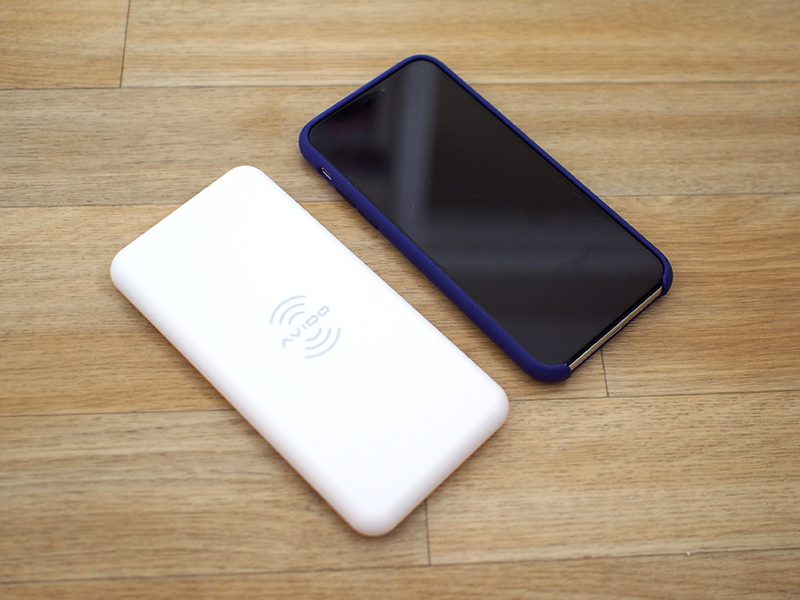 Because it's the same size as the iPhone X, the wireless charging pad also has a somewhat bigger footprint than most upright wireless chargers, so it's going to take up more space on a desk than some charging options. Compared to round flat chargers, though, the rectangular shape of the WiBa takes up less overall desk real estate. 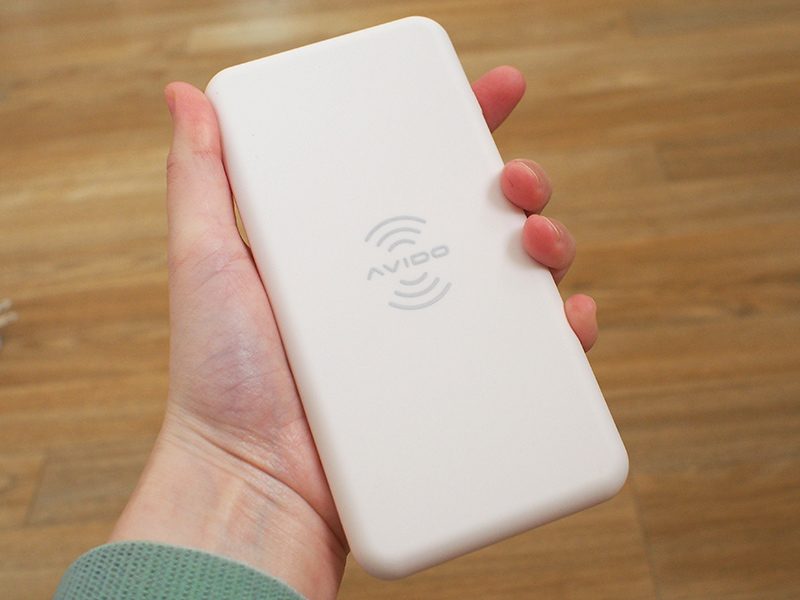 At the bottom of the wireless charging pad, there's a magnetic attachment area where the power bank fits so that it can charge wirelessly. The magnet is nice because the power bank always slips right into the correct place when it needs to be charged with the charging pad, so I never had to fuss with it to find the ideal charging alignment. There's also a magnet in the power bank, which works with a separate magnet attachment that's available for the iPhone to keep it in place while wirelessly charging. My test unit did not come with this accessory so I wasn't able to try it, but for those who don't mind a magnet stuck on the iPhone with adhesive, it should make wireless charging via the power bank more convenient. Sans magnet, it's not really convenient to charge an iPhone with the wireless power bank unless it's set on a flat surface because the power bank has no way to attach to the iPhone. On the wireless charging pad, there's a single USB-C port to connect it to the included power adapter, while the power bank features both a USB-C port and a USB-A port. The USB-C port can be used to charge the power bank more quickly if you don't want to use the wireless charging pad, while the USB-A port can be used to charge devices that don't support wireless charging. 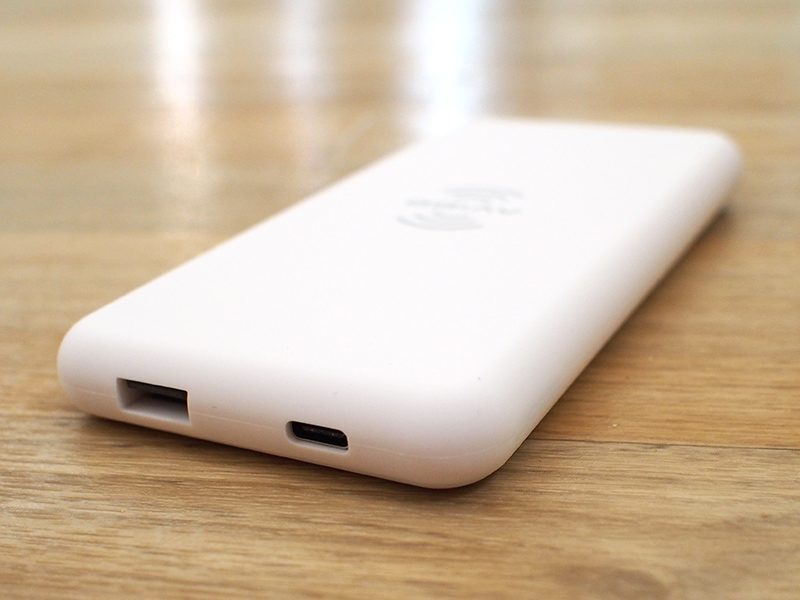 Both the power bank and the charging pad feature an Avido logo front and center, which I wasn't a fan of. The power bank has four white LEDs on one side that let you know the charge and a bright green LED on the other side when it's turned on. Both the green LED and the white LEDs come on when the side button is pressed and charging is activated, and the green LED in particular is distracting. It does, however, turn off after a few minutes. 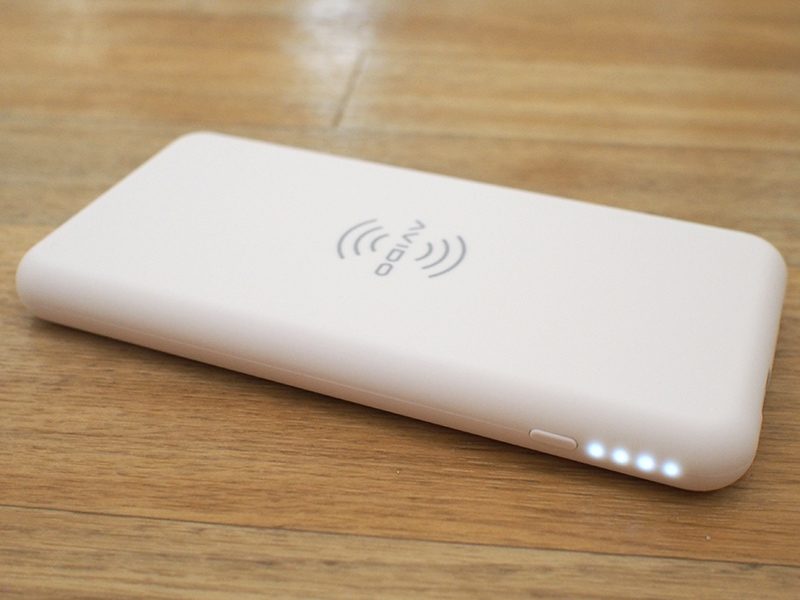 While the iPhone 8, iPhone 8 Plus, and iPhone X support 7.5W wireless charging, the WiBa is limited to 5W charging speeds, which is another downside to the product. It does charge at 10W for Android devices, but Avido told me it was capped at 5W for "safety precautions." Avido also pointed out that there's often not a huge difference between 5W and 7.5W charging, which is not untrue. I've tested a lot of wireless charging options both at 5W and at 7.5W. In the best of conditions, you can eke out about 10 to 12 percent more charge over the course of an hour with a 7.5W charger, but the difference can be lower based on temperature and other factors. I still generally find it worthwhile to choose 7.5W over 5W when possible, so it is disappointing not to see 7.5W support in the WiBa, especially at a $100 price point. In multiple tests in Airplane mode and starting at a 1 percent charge, the WiBa wireless charging pad and the power bank charged my phone to 28 to 34 percent over the course of an hour, which is what I'd expect to see from a 5W charger. 28 to 34 percent is less than the charge you can expect to see from a wired power bank in an hour's time, so this isn't the most efficient on-the-go charging method. 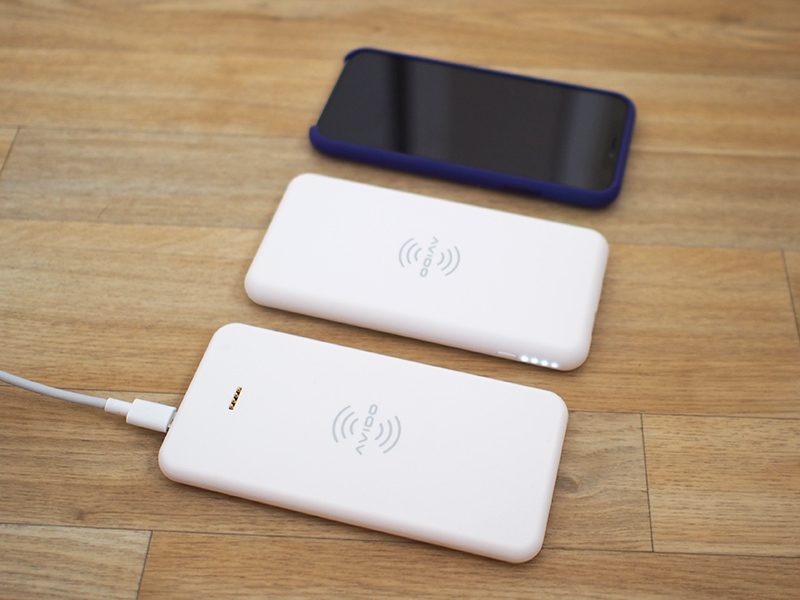 The WiBa boasts a 5,000mAh battery that offers just about enough juice to charge an iPhone X from a dead battery to full once over. In two of my tests, the WiBa power bank charged my iPhone X to 85 percent before dying (again in Airplane mode) but in four other tests, it charged it up to 100 percent with about 5 percent of an additional charge left over. It's safe to say that for the iPhone X, and the iPhone 8 Plus, which has a similar capacity battery, you can count on one additional full charge from the fully charged WiBa power bank. You might get one and a half to two full charges for the iPhone 8, which has a smaller battery. 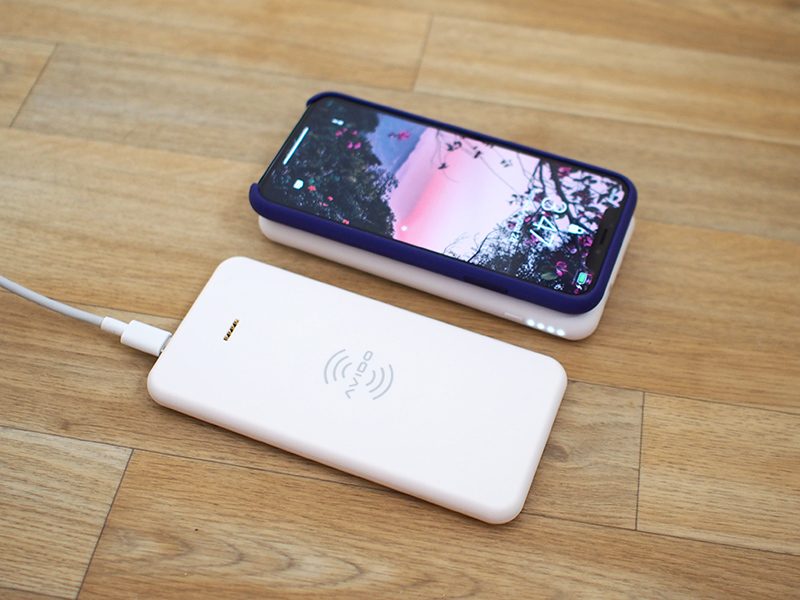 As with the 5W charging limitation, I found the 5,000mAh capacity of the WiBa power bank to be disappointing given the size of the accessory and its price. Bottom Line The WiBa charger is a nice idea, and I can't argue that it's not convenient, but it doesn't feel like it's offering enough utility for the high price tag. This is essentially a 5W wireless charger paired with a 5,000mAh battery pack. You can buy a 5,000mAh power bank on Amazon for about $10 to $15, and a wireless charger costs right around $15 to $20, for a total of $25 to $35. That means Avido is charging quite a premium for the sake of convenience. Sure, you don't need to plug in the power bank while it charges or the iPhone while it charges from the power bank, but what's that shortcut worth? I personally would opt for a standalone 7.5W wireless charger and wired power bank over this particular solution, but people who are looking for a grab and go no-hassle solution where the extra battery is simple to charge may prefer the WiBa setup. I really would have liked to see a higher capacity battery with the WiBa, because a single extra charge for $100 doesn't feel worthwhile. Power banks that offer three times more capacity don't even cost $100. It's also worth noting that wireless charging may not be the best power bank solution. Most people likely reach for a power bank when an iPhone's battery is critically low, and faster charging speeds are preferred in these situations. As a reminder, an hour of charging with the WiBa got my iPhone X to about 28 to 34% across multiple tests. How to Buy The WiBa Wireless and Stackable Power Bank and Charging Pad can be purchased from the Avido website for $99. An extra charging pad can be added for a total of $139. Note: Avido provided MacRumors with a WiBa wireless charger and power bank for the purpose of this review, which was returned to Avido at the conclusion of the review. No other compensation was received.Discuss this article in our forums   
20
« on: August 30, 2018, 07:24:20 PM »
Square today announced that it has updated its original free Square Reader for Magstripe with a new Lightning connector, so sellers with the iPhone 7 and above will no longer need to use an adapter to accept payments from customers. Prior to the Lighting connector update, the Square Reader plugged into the headphone jack on a device. Square users with the iPhone 7 or later were required to use an adapter with the Square Reader as Apple eliminated the headphone jack starting with the iPhone 7. 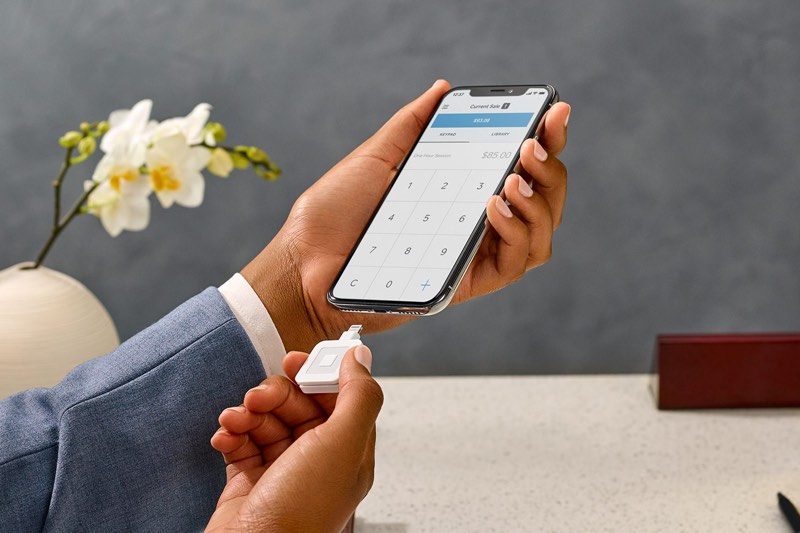 Square is also introducing support for using the original Square Reader with a computer using the Square Virtual Terminal. This setup is ideal for sellers who do the majority of their business on the computer, and the software is compatible with Apple's Macs and Chromebooks. According to Square, users will need to plug the Square reader for Magstripe into the headphone jack on a computer and then open up the Virtual Terminal to begin accepting payments via computer. Transactions made via the new Square Reader with Lightning or the Square Reader used with a computer incur a 2.75 percent fee per swipe for Visa, Mastercard, Discover, and American Express. Manually entered computer payments incur a fee of 3.5 percent plus 15 cents. The Square Reader for Magstripe with the new Lightning connector is available from the Square website for $10 or free for eligible merchants. Tag: SquareDiscuss this article in our forums   
21
« on: August 30, 2018, 07:24:20 PM »
 Jane Krakowski, known for her roles in "Unbreakable Kimmy Schmidt" and "30 Rock," has joined the cast of Apple's upcoming "Dickinson" series, reports Variety. "Dickinson," which Apple ordered back in May, is a half-hour show about the life of poet Emily Dickinson, who will be played by Hailee Steinfeld. Also a musician, Steinfeld is known for her roles in "True Grit," "Pitch Perfect 2," "Pitch Perfect 3," "Ender's Game," and coming of age film "Edge of Seventeen." Krakowski is joining "Dickinson" to play Mrs. Dickinson, Emily's mother. In addition to "Unbreakable Kimmy Schmidt" and "30 Rock," Krakowski has also worked on "Ally McBeal, "Alfie," "Ice Age," and "National Lampoon's Vacation." "Dickinson" has been described as a comedic look into Emily Dickinson's world that explores the constraints of society, gender, and family from the perspective of a budding writer who doesn't fit into her own time. For those unfamiliar with Emily Dickinson, she was a prolific American poet known for short lines, slant rhymes, and irregular use of punctuation. Much of her work focused on death and immortality, and she was known for living a reclusive life. The show is being written and executive produced by Alena Smith, who was previously a writer on "The Affair" and "The Newsroom." David Gordon Green, known for "Stronger," Red Oaks," "Vice Principals," and "Pineapple Express" will direct. "Dickinson" is just one of more than a dozen television shows Apple has in the works. Several of the shows are now in the casting stages, including an untitled space drama from Ronald D. Moore that will star Joel Kinnaman, " Are You Sleeping" starring Octavia Spencer, world-building drama " See" that will star Jason Momoa, and a series based on child journalist Hilde Lysiak starring Brooklynn Prince. Rumors have suggested that we'll see the first of Apple's television shows debut in March 2019. It's not yet entirely clear how Apple plans to distribute the TV shows, but given the sheer number of different shows in the works, it's likely Apple plans to introduce a new streaming service based on its original content. According to a June report from The Information Apple is considering building a bundle that would include access to original TV content, Apple Music, and news and digital magazines for one monthly fee. Related Roundups: Apple TV, tvOS 12Tag: Apple's Hollywood ambitionsBuyer's Guide: Apple TV (Neutral)Discuss this article in our forums   
22
« on: August 30, 2018, 07:24:20 PM »
Zagg today announced the launch of the Zagg Flex Universal Keyboard and Stand, which is designed to work with any Bluetooth device. It can be paired to the iPhone, iPad, Apple TV, and more, along with smart TVs, other tablets, and other smartphones. The Flex Universal Keyboard features a slim protective cover that keeps it safe when in a bag or a purse. When in use, the cover turns into a built-in stand that can hold any-sized smartphone or tablet at an ideal viewing angle.  Zagg has included support for multi-device pairing so the keyboard can be connected simultaneously to two devices, with a toggle available to switch between them. Laptop-like keys offer a comfortable typing experience while on the go and backlighting for the keys allows the keyboard to be used in low-light conditions. A built-in battery lasts for up to one year before needing to be recharged. According to Zagg, the Flex keyboard and cover have been designed to be detachable so it can also be used sans cover with devices that don't require a stand. Zagg's Flex Universal Keyboard can be purchased from the Zagg website for $79.99. It will ship out to customers starting on September 19. Tag: ZaggDiscuss this article in our forums   
23
« on: August 30, 2018, 07:24:20 PM »
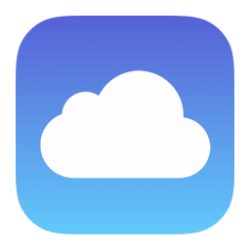 Connecticut man George Garafano has been sentenced to eight months in prison for his role in the 2014 iCloud hacks that saw many celebrity photos illicitly shared on the internet. Garafano was accused of hacking the iCloud accounts of more than 200 people over the course of 18 months, including multiple celebrities. According to the Hartford Courant, a federal judge in Connecticut ordered the eight month prison term, which will be followed by three years of supervision after release. Garafano in April pleaded guilty to sending phishing emails to his victims posing as a member of Apple's online security team to obtain usernames and passwords. During the case, prosecutors said he traded the photos that he stole with other hackers and may have sold some of them to earn extra income. Prosecutors had argued that Garafano should serve 10 to 16 months in prison, while Garafano asked for a more lenient sentence of five months in prison followed by five months in home confinement. Garafano, who was in college at the time, says he has already suffered for his role in the 2014 hacking event and has "cleaned up his act" since the hacking occurred. There were a total of four people charged with breaking into the iCloud accounts of celebrities, including Ryan Collins, Edward Majerczyk, and Emilio Herrera, along with Garafano. The other hackers have already been sentenced to prison terms ranging from nine months to 18 months. When hundreds of nude celebrity photos began leaking online in 2014, there was initial speculation that iCloud had been hacked, but following an investigation, Apple determined that the accounts had been compromised by weak passwords. Apple has since made improvements to its iCloud security by adding two-factor authentication to iCloud.com, introducing email alerts when an iCloud account is accessed on the web, and requiring app-specific passwords for third-party apps that access iCloud. Discuss this article in our forums   
24
« on: August 30, 2018, 07:24:20 PM »
Apple has purchased a startup that makes lenses for augmented reality glasses, reports Reuters. The acquisition lends further evidence to rumors suggesting Apple is developing an augmented reality headset. Akonia Holographics, the startup that Apple bought, advertises the "world's first commercially available volume holographic reflective and waveguide optics for transparent display elements in smart glasses." 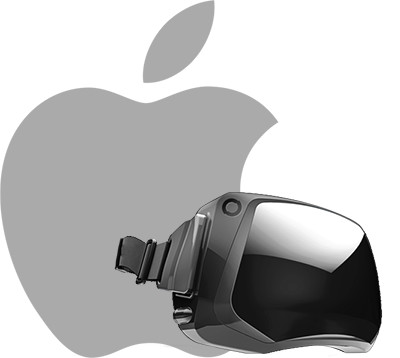 The displays that it makes are said to use the company's HoloMirror technology for "ultra-clear, full-color performance" to enable the "thinnest, lightest head worn displays in the world." Apple confirmed the purchase to Reuters with the statement that it uses when it makes an acquisition: "Apple buys smaller companies from time to time, and we generally don't discuss our purpose or plans." Akonia Holographics was founded in 2012 by holography scientists who focused on holographic data storage before moving on to develop displays for augmented reality glasses, according to the company's website. It's not clear when exactly Apple purchased Akonia Holographics, but sources that spoke to Reuters suggested the company had become "very quiet" over the last six months, indicating the acquisition may have been made in the first half of 2018. Multiple rumors have suggested Apple has a research unit of hundreds of employees working on AR and VR and exploring the ways the emerging technologies could be used in future Apple products. Apple is said to be exploring several prototypes, including a powerful AR/VR headset with an 8K display for each eye and a set of augmented reality smart glasses with a dedicated display, a built-in processor, and an "rOS" or reality operating system. Rumors indicate that Apple's first AR or VR product could come out in 2019 or 2020. Apple's purchase of Akonia Holographics is its second recent AR/VR related acquisition. In November 2017, Apple purchased Vrvana, a company that developed a mixed reality headset called Totem. Related Roundup: Apple VR ProjectTag: Apple acquisitionDiscuss this article in our forums   
25
« on: August 30, 2018, 07:24:20 PM »
Popular speaker company Ultimate Ears today announced the launch of the two newest speakers in its product lineup, the BOOM 3 and the MEGABOOM 3. Like all Ultimate Ears speakers, the BOOM 3 and MEGABOOM 3 are portable, waterproof speakers that can be used in a variety of conditions and are perfect for the pool or the beach. Compared to previous-generation speakers, the BOOM 3 and MEGABOOM 3 use new two-toned high-performance fabric that's ultra tough and was originally designed for purposes like motorcycle jackets and fire equipment. 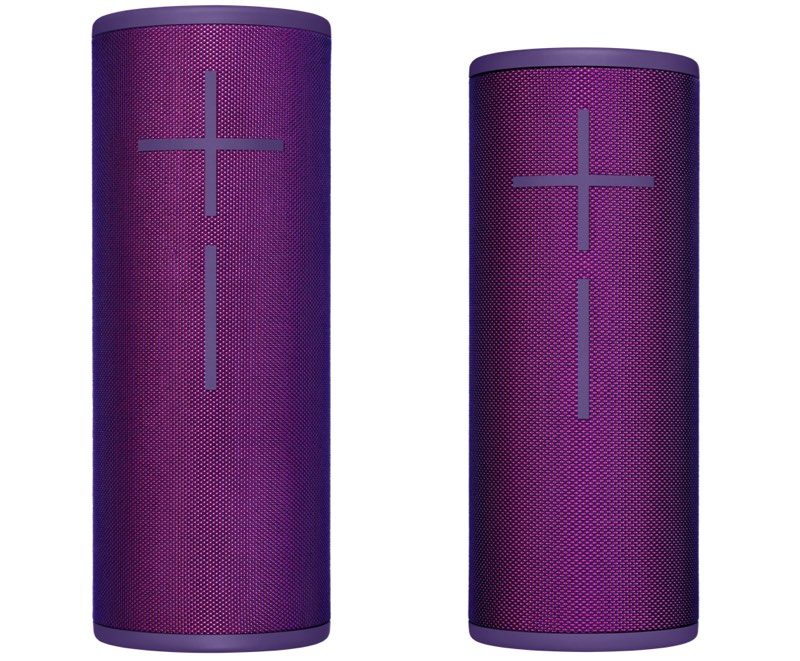 The speakers also include a new Magic Button at the top of the enclosure for easier access to music controls, while MEGABOOM 3 comes equipped with deeper bass thanks to new passive radiators. Design We were able to check out the new MEGABOOM 3 ahead of its debut, and we were impressed with its fresh design and the new controls that Logitech has implemented. The new two-tone fabric looks fantastic, and the overall design of the speaker is much sleeker because the rubber strap that's normally at the front has been relocated to the back. This also gives more surface area for the sound, for better 360 degree audio. 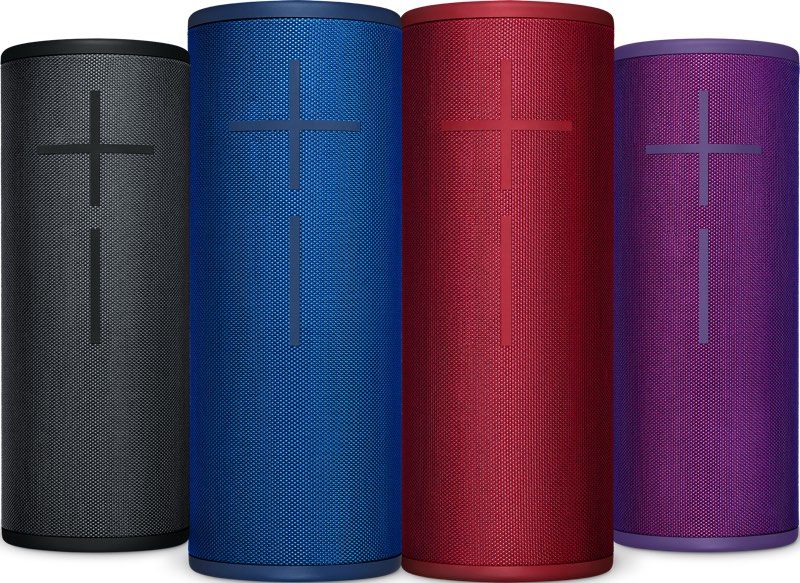 We checked out the red version of the speaker, which is vibrant and eye catching, but it also comes in black, blue, and purple. Apple will also be selling two exclusive BOOM 3 and MEGABOOM 3 colors: cloud, a light blue, and denim, a darker blue shade. It's worth noting that the new fabric the speaker is made from adds better resistance to dust, increasing its water resistance and ingress rating to IP67. 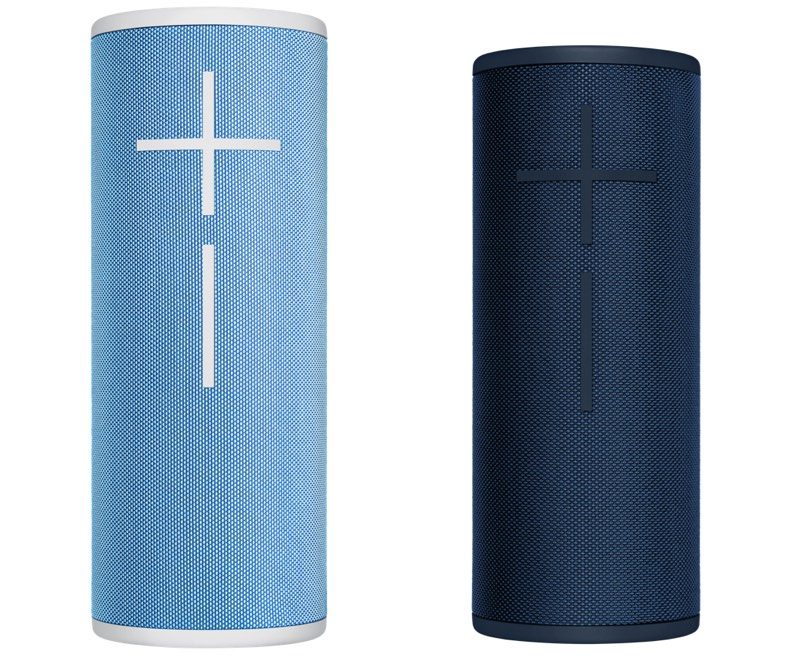 MEGABOOM 3 and BOOM 3 will hold up to liquids and can be used at the beach, at the pool, in the rain, and in other similar conditions. This year, the speakers float, so you can stick them right in the pool to listen to music while you swim. Ultimate Ears does water resistance right and we've never seen issues with the speakers in wet conditions. 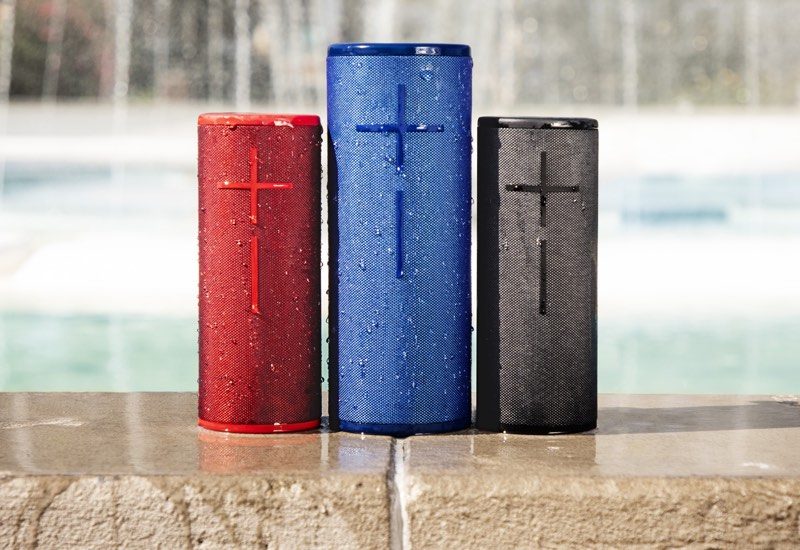 The BOOM 3 is the smaller of the two speakers and is more portable, while the MEGABOOM 3 is larger with louder sound and more bass, making it ideal for use outdoors. Sound wise, the MEGABOOM 3 is loud enough that at max volumes it's more than loud enough to be heard throughout multiple rooms or across much of a pool or beach area. With the new look, the "+" and "-" buttons blend right into the fabric of the speaker for a more subtle design, and, most importantly, the update relocates the micro-USB to the back of the device instead of the bottom so it's now possible to charge while the speaker is upright and in use. Both the MEGABOOM 3 and BOOM 3 are compatible with the $40 Power Up charging dock that Ultimate Ears launched last year, which lets you charge the speaker inductively so you don't need to fuss with a cable and the micro-USB port. The MEGABOOM 3 and BOOM 3 have built-in batteries. The BOOM 3 battery can last for up to 15 hours before needing to be recharged, while the MEGABOOM 3 battery can last for 20 hours. Performance and App While the MEGABOOM 3 and BOOM 3 look great, it's the addition of the Magic Button that boosts their utility above and beyond previous-generation Ultimate Ears speakers. Paired with the new Ultimate Ears BOOM app, the Magic Button allows the MEGABOOM 3 and BOOM 3 to work with playlists for the first time. From Apple Music, you can import up to four playlists. You can include self-created playlists or those that Apple creates, such as New Music Mix and Chill Mix. 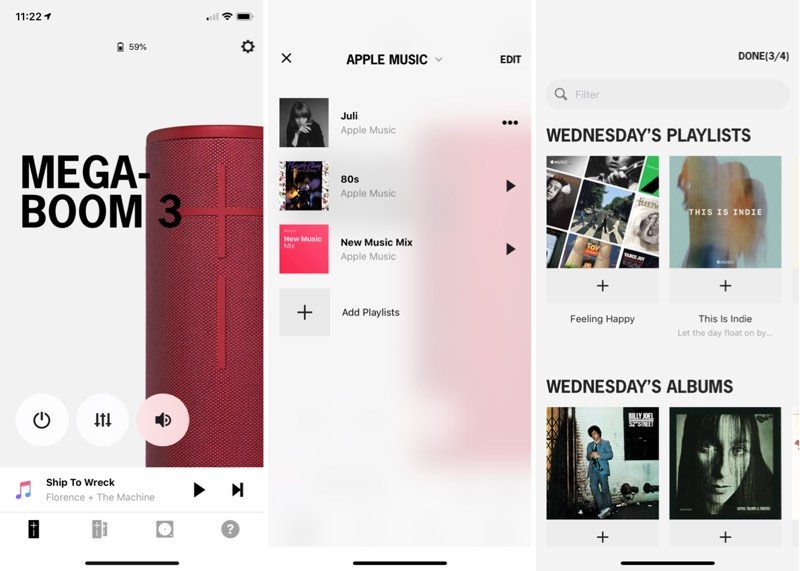 Playlists can be played automatically using the Magic Button. A long press will activate your Playlists, while a second long press will skip to the next playlist. This is useful if you have different playlists you want to access at a party or while at the beach or in the pool but don't have your iPhone handy. The Magic Button also offers full controls for other purposes. Pressing it turns the speaker on, while a second press will pause. A double press will skip to the next song. 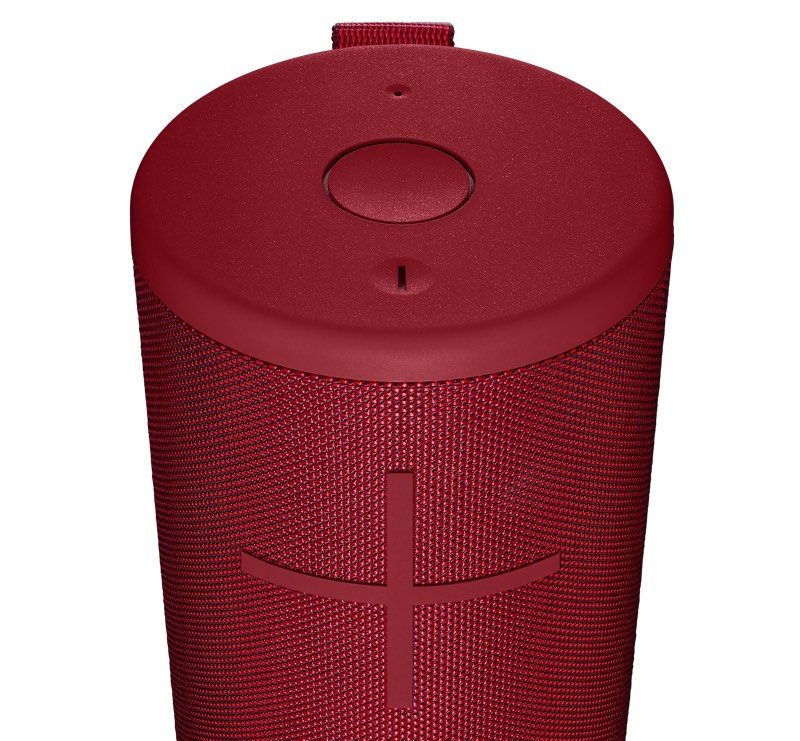 You can set up four playlists using the BOOM app, which is required to use the playlist feature. On iOS devices, it works with Apple Music and pulls content from your music library, recommendations from Apple, and preset playlists you've created. The playlists feature is limited to Apple Music, so it unfortunately won't work with Spotify at this time. On Android, though, it does work with Deezer Premium, and Ultimate Ears says that additional music services will be added in the future. You can, however, still play music from Spotify or any other music service from the iPhone over the Bluetooth connection to the speaker. The BOOM app also offers full music controls and the ability to turn the speaker on and off, plus it offers an equalizer for adjusting bass, mid, and treble to preferred levels. The app also provides access to key features Ultimate Ears speakers are known for like PartyUp for linking up to 150 speakers together and Block Party for allowing multiple people to stream content to the MEGABOOM 3 or BOOM 3. 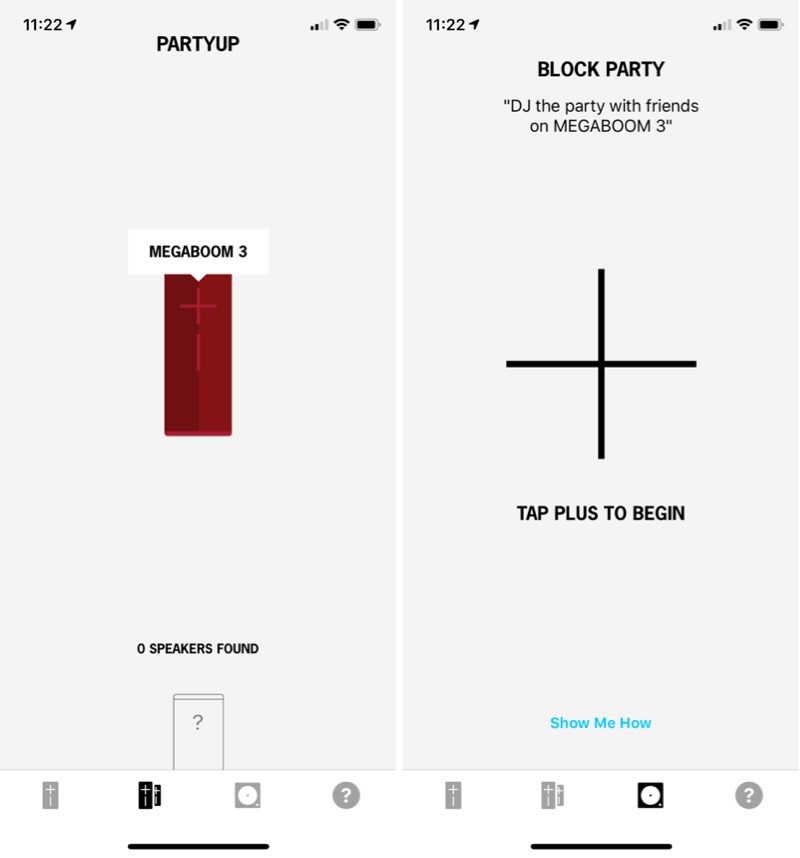 Ultimate Ears says that both the MEGABOOM 3 and BOOM 3 have been upgraded with enhanced Bluetooth range up to 150 feet, and that longer range support was evident in our testing compared to previous-generation Ultimate Ears speakers. Ultimate Ears' speakers always sound great, and while no improvements have been made to the sound quality of the BOOM 3, the MEGABOOM 3 has noticeably deeper bass through the inclusion of new passive radiators. 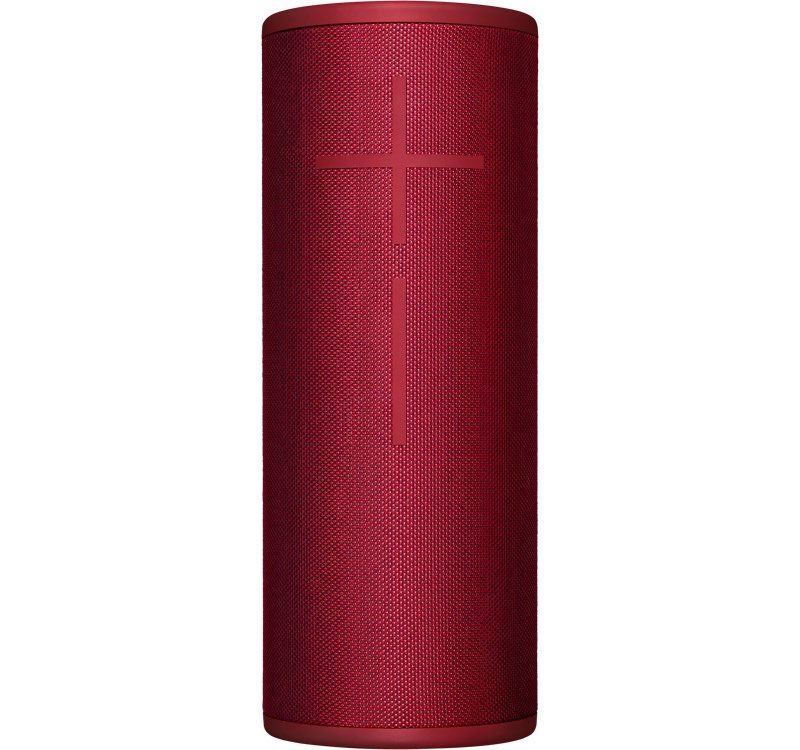 We weren't able to test the BOOM 3's sound, but the MEGABOOM 3 sounds even better than previous-generation Ultimate Ears speakers. How to Buy The new MEGABOOM 3 and BOOM 3 will be available for purchase starting in September in the United States and select countries in Europe and Asia. The BOOM 3 is priced at $149.99, and the MEGABOOM 3 is priced at $199.99. As mentioned earlier, Apple will be selling exclusive versions of the two speakers in two different shades of blue. Note: Ultimate Ears provided MacRumors with MEGABOOM 3 for the purpose of this review. No other compensation was received.Tags: Logitech, Ultimate EarsDiscuss this article in our forums   
26
« on: August 30, 2018, 07:24:20 PM »
Apple is again partnering with Postmates for this week's Apple Pay promotion, which offers a free delivery from the app when using Apple Pay for your first Postmates delivery. This means that the offer is valid only to new customers who have not previously made an order on the Postmates app before.  If you qualify and are 18 years or older, the promotion will run through September 5, 2018. You can check if Postmates is in your area by downloading the app [ Direct Link], and if it is you can then place an order for food, groceries, or many other items. Choose Apple Pay during checkout, and you'll get the first delivery for free. No promo code is required. This week's Apple Pay promotion is themed around the weekend, and Apple encourages customers to "pick up supplies quicker at your favorite places" and pay with Apple Pay, including Baskin-Robbins, Jamba Juice, and Trader Joe's. Apple offered the same promotion with Postmates back in May, and previously partnered with the delivery app in one of the first Apple Pay promotions last November. Other recent promotions include partnerships with StubHub, TGI Fridays, Adidas, Instacart, Fandango, and more. Tags: Postmates, Apple Pay promoDiscuss this article in our forums   
27
« on: August 30, 2018, 07:24:20 PM »
Eve Systems, formerly Elgato, today announced several new additions to its popular HomeKit product lineup, including a power strip, a light strip, and a new light switch for use in Europe. The Eve Light Strip follows the Eve Flare, a HomeKit-connected mood lamp that was released in May. The Eve Flare was limited to countries in Europe and is not available in the U.S., but the Light Strip will see a wider release. 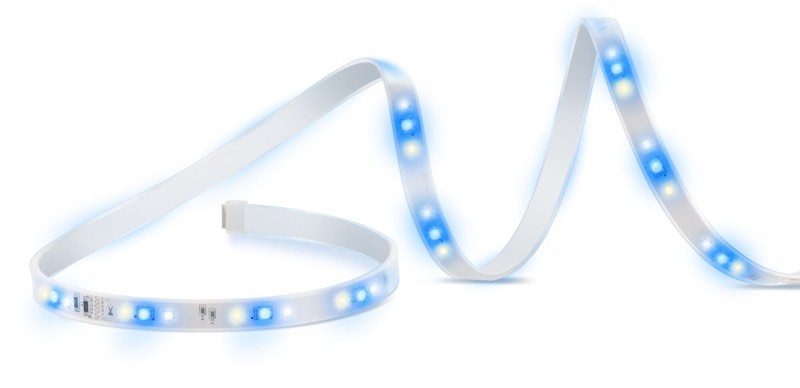 The LED light strip works with a selection of pre-installed lighting scenes and allows users to set their own colors. According to Eve, the Light Strip provides up to 1800 lumens across its two meter length thanks to triple-diode architecture. Eve Light Strip can be extended to a total length of 10m with additional light strip purchases.  Unlike most Eve products, which connect to HomeKit over Bluetooth, the Light Strip connects using a 2.4GHz Wi-Fi connection. It does not, however, require a bridge and works on a standalone basis. The Eve Power Strip is a triple-socket power strip that adds separate HomeKit-based controls to three devices that are plugged into it. It features a black housing that's framed in aluminum, with built-in surge protection safeguards. 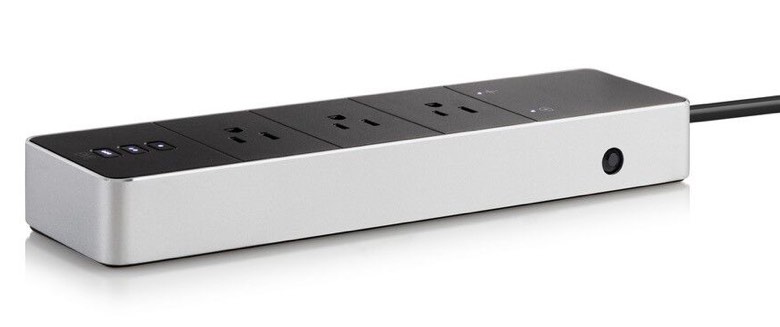 With the Eve app, the Eve Power Strip is able to measure power consumption and provide energy cost projections, allowing users to keep track of power usage for the devices that are plugged in. Like the Eve Light Strip, Eve Power Strip connects to a HomeKit setup using a 2.4GHz Wi-Fi connection. 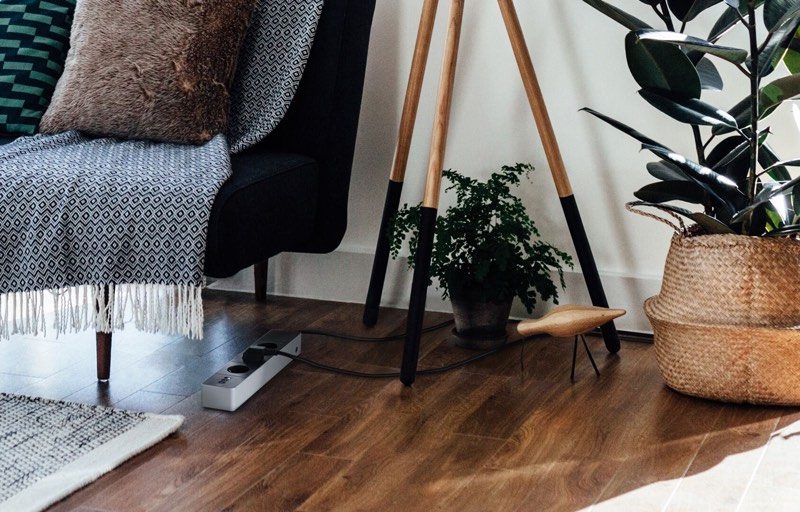 The third product Eve is announcing today is a new Eve Light Switch, which is designed to replace common European switches. Eve already has a Light Switch compatible with U.S. setups, and this new version expands the light switch to Europe. 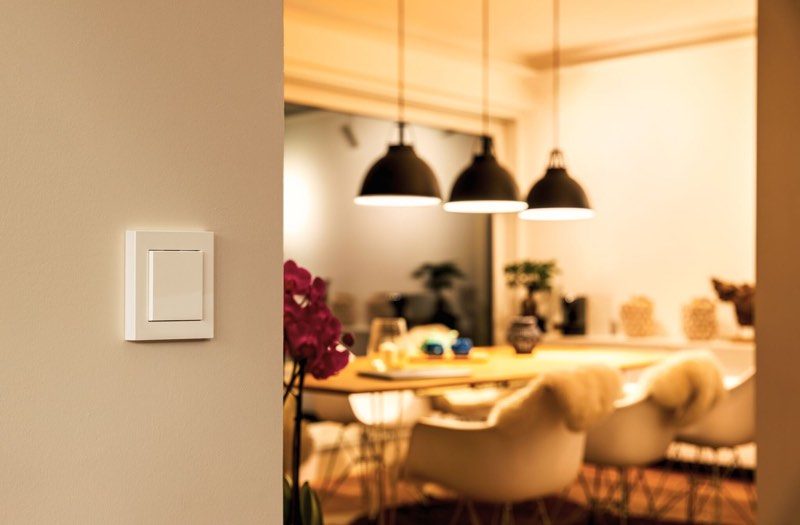 With HomeKit integration, all Eve accessories can be controlled via Siri voice commands, through the Home app, or through the dedicated Eve app. Eve accessories can also be integrated into HomeKit scenes and automations alongside other HomeKit products. Eve Light Strip, the new Eve Light Switch, and the Eve Power Strip will be available at a later date from the Eve website and from retailers like Amazon. The Light Switch will be priced at 99.95 euros, while the Light Strip will be priced at $79.95. Pricing for the Power Strip has yet to be announced. Tags: HomeKit, EveDiscuss this article in our forums   
28
« on: August 30, 2018, 07:24:20 PM »
Apple representatives attended the Touch Taiwan display industry convention in Taipei this week, holding private meetings with Taiwanese display makers AU Optronics and Epistar, according to the Economic Daily News.  The report claims Apple held the meetings to learn more about each company's development of next-generation display technologies MicroLED and MiniLED, suitable for future generations of iPhones and Apple Watches. As those names suggest, both technologies utilize arrays of very tiny LEDs. In May, AU Optronics received a Best in Show award at the Display Week 2018 convention in Los Angeles for its multiple advanced display technologies, including the "world's highest resolution and full color TFT driven 8-inch micro LED display technology," according to the company's press release. Apple is said to be most interested in MicroLED, as MiniLED is described as more of a transitionary technology that it may skip. Apple has been exploring MicroLED displays since at least 2014, when it acquired MicroLED display maker LuxVue. In 2015, Apple reportedly opened a secretive laboratory in Taoyuan, Taiwan to research the technology, but has since shifted the efforts to Santa Clara, California, near its headquarters. In addition to AU Optronics and Epistar, Apple has reportedly collaborated with its contract manufacturer TSMC to develop methods of mass producing MicroLED panels. Apple also reportedly held talks with another Taiwanese company PlayNitrite, which has developed its own MicroLED solution PixeLED. MicroLED displays have many of the same advantages as OLED displays have over LCDs, including improved color accuracy, improved contrast ratio, faster response times, and true blacks given both have self-lit pixels, but they are even thinner, much brighter, and more energy efficient than OLED panels.  Image Credit: TrendForce Image Credit: TrendForce MiniLED displays also have benefits such as improved brightness and contrast ratio, but they have a backlight like LCDs. As with OLED, Apple's use of MicroLED would likely start small, with the Apple Watch, followed by the iPhone. A recent report said Apple may use MicroLED for its widely rumored augmented reality glasses as well. All in all, the transition to MicroLED should lead to even better displays and longer battery life on future Apple devices. Tags: Micro-LED, AU Optronics, Epistar, Mini-LEDDiscuss this article in our forums   
29
« on: August 29, 2018, 05:08:16 AM »
Apple's upcoming trio of iPhones will see an estimated 70-75 million units shipped from suppliers to Apple by the end of 2018, according to supply chain sources speaking to DigiTimes. Thanks to the expected solid performance of the iPhones this year, Apple's main supply partners TSMC and Foxconn are looking forward to new revenue highs in Q4 2018. Specifically, if suppliers hit this range it will be the best performance for an iPhone since the launch of the iPhone 6 models in 2014. One of the main reasons for the boost is given to the "price-friendliness" of the 6.1-inch LCD iPhone, which Apple is expected to introduce as a cheaper alternative to the other two models: an updated 5.8-inch iPhone X and a larger 6.5-inch "iPhone X Plus," although Apple may not go with the "Plus" branding this year.  Apple analyst Ming-Chi Kuo believes Apple will use an aggressive pricing strategy for its 2018 iPhone lineup: the 6.5-inch OLED device will be priced at $900 to $1,000, the 5.8-inch OLED second-generation iPhone X will be priced at $800 to $900, and the 6.1-inch LCD iPhone will be priced at $600 to $700. While the 5.8-inch and 6.5-inch will be available in September, a few reports have stated the 6.1-inch model will face a delay. DigiTimes also references "smooth production and strong shipment momentum" picking up soon: Most supply chain partners are expected to see revenues pick up significantly along with smooth production and strong shipment momentum before peaking in the fourth quarter of the year. The impressive upgrades in overall designs and functions as well as the price-friendliness of the 6.1-inch model should give the new devices a shipment momentum much stronger than their two preceding generations, the sources said. For TSMC, the supplier is expected to "fully recover" by the fourth quarter, following a "debilitating" computer virus that hit many of its fabrication tools in early August. Concern quickly spread about the company's inability to fill Apple's orders in the wake of the virus, but follow-up reports quickly suggested that TSMC would be able to "fill orders on time for Apple Inc.," ensuring no delays in chip shipments for the 2018 iPhones. In regards to the 2018 iPhone assembly, both Foxconn and Pegatron will share duties building the models. Foxconn will build the majority of the two OLED iPhones, while it has just 30 percent of the orders for the LCD model, with Pegatron getting the majority of the duty building the cheaper iPhone this year. Yesterday, a report from Bloomberg provided a hint at one name that Apple has brainstormed for the 2018 OLED iPhones -- "iPhone Xs" -- but it's still unclear what the final names will be. The actual reveal event is now rumored to be held on Wednesday, September 12 at Steve Jobs Theater, according to two unnamed sources speaking to French radio station Europe 1, followed by iPhone pre-orders kicking off on Friday, September 14. Despite concern over sales figures quickly dropping after first-adopters purchased the ten-year anniversary iPhone X, the flagship device performed well in Q4 2017 and remained popular among customers throughout 2018. Addressing concerns over dwindling sales and those worried about numbers, Apple CEO Tim Cook in May said: "I think it's one of those things where a team wins a Super Bowl. Maybe you want them to win with a few more points, but it's a Super Bowl winner and that's how we feel about it." Related Roundup: 2018 iPhonesTag: digitimes.comDiscuss this article in our forums   
30
« on: August 29, 2018, 05:08:16 AM »
Samsung today announced the launch of its newest portable solid state drive, the SSD X5. The X5, which uses Thunderbolt 3 technology, is the company's first NVMe-based portable solid state drive for super fast transfer speeds in a form factor that's compact and durable. Samsung says the X5 offers read speeds of up to 2800MB/s, which is 5.2 times faster than SATA interface portable SSDs and up to 25.5 times faster than external hard drives.  It also features a maximum write speed of 2300MB/s, allowing for a 20GB 4K video to be transferred in approximately 12 seconds. It uses Samsung's Portable SSD Software, which includes AES 256-bit hardware data encryption, optional password protection, and configurable security settings. "As a leader in high-performance and reliable storage solutions, we are thrilled to continue to advance the external SSD market with the introduction of our first Thunderbolt 3 portable SSD," said Dr. Mike Mang, vice president of Brand Product Marketing, Memory Business at Samsung Electronics. "The X5 is yet another testament to Samsung's commitment to providing innovative portable storage solutions that enable faster transfer of large data files, saving users' valuable time."Design wise, the X5 includes an all-metal body with a glossy finish and a non-slip mat at the bottom. It uses a shock-resistant internal frame that Samsung says can withstand drops of up to two meters. Inside, Dynamic Thermal Guard technology and a heat sink protect the X5 from overheating. Samsung's new X5 works with all Macs and PCs that have Thunderbolt 3 ports, which for the Mac lineup, includes 2016 and later MacBook Pro models, 2017 iMac models, and the iMac Pro. The X5 will be available for purchase starting on September 3. The 500GB model will be priced at $400, the 1TB model will be priced at $700, and a 2TB model will be available for $1,400. Additional information is available on Samsung's website. Tag: SamsungDiscuss this article in our forums   
|








 )
) 








 Jane Krakowski, known for her roles in "Unbreakable Kimmy Schmidt" and "30 Rock," has joined the cast of Apple's upcoming "Dickinson" series, reports
Jane Krakowski, known for her roles in "Unbreakable Kimmy Schmidt" and "30 Rock," has joined the cast of Apple's upcoming "Dickinson" series, reports 
 Connecticut man George Garafano has been sentenced to eight months in prison for his role in the
Connecticut man George Garafano has been sentenced to eight months in prison for his role in the 















 Image Credit: TrendForce
Image Credit: TrendForce 
